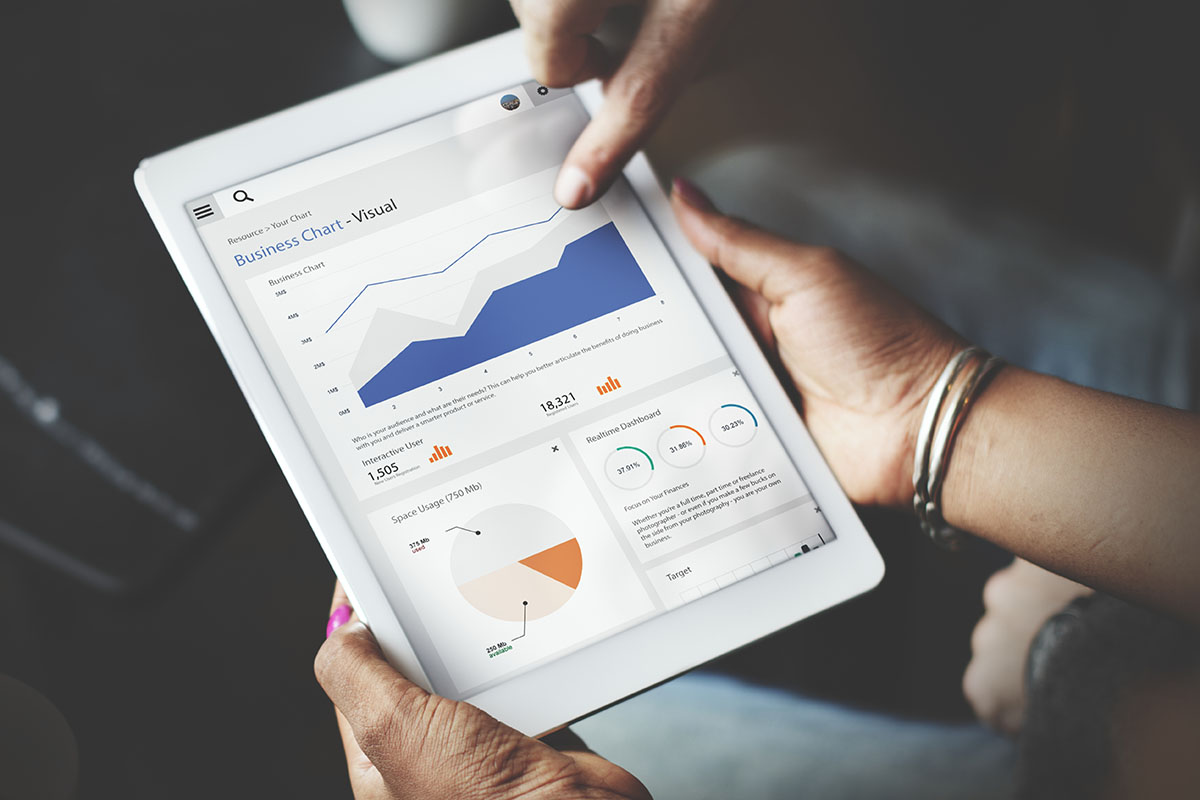There is a lot of talk about qualitative and quantitative feedback within the business world. But what does it all mean and which type of feedback should your business use?
Here, we’ll explore the definition of each type of feedback, discuss when it is best used, and provide examples.
In any business, it is crucial to receive feedback in order to gauge the company’s performance and progress. But what type of feedback is best for your business – qualitative or quantitative?
Both types have their own strengths and weaknesses, so let’s take a closer look at both qualitative and quantitative feedback.
Let’s get started!
What is Qualitative Feedback?
This type of feedback is based on opinions and feelings, rather than hard data. It can be given in person, through surveys, or via customer interviews. Qualitative feedback is useful for getting an overall sense of customer satisfaction, as well as identifying any specific pain points.
However, qualitative feedback can be difficult to interpret, since it is often subjective. In addition, it can be time-consuming and expensive to gather, since it usually requires one-on-one interaction with customers.
Feedback goes far beyond just that provided by customers, be sure to provide your team with feedback on areas to improve. Ultimately, happier employees can lead to happier customers!
What is Quantitative Feedback?
This type of customer feedback is based on data and numbers, rather than opinions. It can be collected through surveys, customer satisfaction ratings, or website analytics. Quantitative feedback is useful for measuring specific metrics, such as customer satisfaction levels or website traffic.
However, quantitative feedback can be difficult to interpret, since it can be affected by many different factors. In addition, it can be time-consuming and expensive to gather, since it often requires specialized software or expertise.

Pros of Qualitative Feedback
Let’s take a closer look at the benefits of qualitative feedback:
1. Helps you understand customer needs and wants
When you collect qualitative feedback, you’re able to gain valuable insights into what your customers are thinking and feeling. This type of feedback can help you understand their needs and wants, and how they feel about your product or service.
For example, you might learn that your customers want a more user-friendly interface, or that they’re not happy with the quality of your product.
2. Gives you specific feedback
Qualitative feedback is usually more specific than quantitative feedback. This type of feedback can help you pinpoint areas that need improvement, and identify any potential problems.
Suppose you receive the following feedback: “The user interface is confusing and I couldn’t figure out how to do X.” This specific feedback can help you improve your user interface so that it’s more user-friendly.
3. Helps you understand the customer’s point of view
The customer’s point of view is important, and qualitative feedback can help you understand it. This type of feedback can help you see things from the customer’s perspective, and understand how they feel about your product or service.
For example, suppose you receive the following feedback: “I didn’t like the color of the product.” From this feedback, you can infer that the customer didn’t like the product because of its color. This understanding can help you make changes to the product so that it’s more appealing to customers.
4. Helps you identify trends
When you collect qualitative feedback, you can start to see patterns and trends emerge. This type of feedback can help you identify problems early on, and make changes before they become serious.
During your next project, pay close attention to the feedback you receive. If you notice any patterns or trends, be sure to address them as soon as possible.
5. Gives you actionable insights into customer behavior
Qualitative research methods can help you understand why customers behave the way they do. This type of feedback can help you learn about the customer’s thought process, and how they make decisions.
For example, suppose you receive the following feedback: “I didn’t buy your product because I didn’t understand how it worked.” This feedback can help you understand that the customer wasn’t sure about the product, and that’s why they didn’t make a purchase.
6. Helps you understand customer motivation
Qualitative customer feedback can also help you understand what motivates your customers. This type of feedback can give you more insight into what drives customer behavior, and what they’re looking for in a product or service.
For example, you might learn that your customers are motivated by convenience, or by the desire to save money.
7. Helps you understand customer expectations
Qualitative analysis can help you understand what customers expect from your product or service. This type of feedback can help you determine whether or not you’re meeting customer expectations, and make changes if necessary.
For example, suppose you receive the following feedback: “I was expecting the product to be X, but it was actually Y.” This feedback can help you understand that the customer’s expectations were not met, and that you need to make changes to the product.
8. Helps you understand customer satisfaction
Qualitative feedback can help you understand how satisfied your customers are with your product or service. This type of feedback can help you identify any areas that need improvement, and make changes to increase customer satisfaction.
Suppose you receive the following feedback: “I’m not happy with the customer service I received.” This feedback can help you improve your customer service so that it’s more responsive and efficient.
9. Helps you understand customer loyalty
Qualitative feedback helps you understand how loyal your customers are to your brand through qualitative survey questions. This type of feedback can help you identify any areas that need improvement, and make changes to increase customer loyalty.
Suppose you receive the following feedback: “I’m not sure if I would recommend your product to a friend.” This feedback can help you improve your product so that it’s more likely to be recommended to others.
Cons of Qualitative Feedback
Let’s take a look at some of the potential drawbacks of qualitative feedback:
1. Can be hard to interpret
Qualitative feedback can sometimes be difficult to interpret. This type of feedback can be vague, and it can be hard to infer the customer’s meaning. This can make it difficult to take action on the feedback.
If you’re having trouble interpreting qualitative feedback, try to get more information from the customer.
2. Can be time-consuming to collect
Collecting qualitative feedback can sometimes be time-consuming. This type of feedback is often collected through interviews and surveys, which can take a lot of time to complete.
If you’re short on time, you can try to collect qualitative feedback through more efficient methods, such as focus groups or online surveys.
3. May not be representative of all customers
Qualitative feedback is typically given by a small number of customers and doesn’t always reflect the opinions of all customers.
This is because it’s based on the experiences and impressions of a few people, which may not be representative of the entire customer base. In addition, qualitative feedback can be influenced by personal biases and preferences.
If you want to get a more accurate picture of your customer base, you can try to collect qualitative feedback from a larger sample of customers.
4. Maybe biased
Qualitative feedback may be biased. This type of feedback is often collected from a small sample of customers, which may not be representative of the larger customer base.
If you’re concerned about bias, you can try to collect qualitative feedback from a larger sample of customers. You can also ask multiple people for their opinions on the feedback.
5. Can be hard to quantify
Qualitative feedback can sometimes be difficult to quantify. This type of feedback is often open-ended and subjective, which can make it hard to measure.
If you’re having trouble quantifying qualitative feedback, try to get more information from the customer. You can also ask other people for their opinions on the feedback.

Pros of Quantitative Feedback
Now that we’ve discussed some of the potential drawbacks of qualitative feedback, let’s take a look at some of the benefits of quantitative feedback:
1. Is easy to collect
When it comes to collecting feedback, quantitative numerical data is much easier to gather than qualitative data. All you need to do is create a survey with quantifiable questions and send it out to your customers. Once you’ve gathered open-minded responses, you can quickly and easily analyze the results using statistical methods.
Suppose you want to know how satisfied your customers are with your product. An easy way to find out would be to ask them to rate their satisfaction on a scale of 1-5, with 5 being very satisfied and 1 being very dissatisfied.
2. Is more objective
Quantitative data is less prone to bias than qualitative data. This is because quantitative data is based on facts and numerical values, rather than opinions and perceptions.
For example, let’s say you want to know how many people use your product on a daily basis through quantitative survey questions. You could send out a survey asking your customers to estimate their usage. However, this number would be subjective and prone to error. A better way to find out would be to track usage data using data analysis tools.
3. Is easier to analyze
Quantitative data is much easier to analyze than qualitative data. As often the results are summarised in a single number. For example, when using NPS ratings, there’s a single number that can be used to get a quick idea of how your business is performing.
Even when you have a large amount of quantitative data, you can still quickly and easily find trends and patterns. However, this is much more difficult with qualitative data, which often requires manual quantitative analysis.
4. Provides more insights
Quantitative data can gain insights that would be difficult to obtain with qualitative data. For example, suppose you want to know what percentage of your customers are satisfied with your product.
This is a difficult question to answer with qualitative data, as it would require you to manually analyze a large number of feedback forms. However, it’s easy to answer with quantitative data. All you need to do is look at the average satisfaction rating from your surveys.
5. Is more reliable
Quantitative data is more reliable than qualitative data. This is because quantitative data is based on facts and numerical results, while qualitative data is based on opinions and perceptions.
It’s important to note that quantitative data is not always 100% accurate. However, it is more accurate than qualitative data.
6. Is easier to compare
Quantitative data is much easier to compare than qualitative data. This is because quantitative data can be summarized using statistical methods, such as mean, median, and mode.
This makes it easy to compare different groups of data, such as men and women, or different age groups.
7. Is easier to communicate
Quantitative data is much easier to communicate than qualitative data. This is because when you collect quantitative data, it can be summarized using statistical methods, such as mean, median, and mode.
This makes it easy to present the results of your research in a clear and concise manner. For example, you could say by using customer satisfaction surveys that the average satisfaction rating for your product is 4 out of 5 on net promoter score.
8. Is more actionable
Quantitative data is more actionable than qualitative data. This is because quantitative data can be used to identify trends and patterns.
For example, suppose you notice that the satisfaction rating for your product is consistently lower among men than women. This is an actionable finding that you can use to improve your product.
9. Is more flexible
Comparison of results is easier when working with quantitative data. Because it’s far easier to apply statistical methods, scores such as mean, median, and mode when comparing results.
This makes it easy to change the level of detail that you include in your analysis. For example, you could focus on the average satisfaction rating, or you could drill down and look at the satisfaction ratings for each individual customer.
Cons of Quantitative Feedback
Let’s take a look at some of the disadvantages of quantitative research:
1. Does not provide in-depth insights
Quantitative data is useful for understanding trends and patterns. However, it does not provide in-depth insights into why these trends exist.
For example, suppose you notice that feedback ratings are generally lower among new business customers as opposed to returning customers. While this is an actionable finding, it doesn’t tell you why this is the case.
2. Is more expensive
Quantitative research is usually more expensive than qualitative research. This is because it requires specialized equipment and software, and often requires a larger sample size.
3. Takes longer
Quantitative research usually takes longer than qualitative research. This is because it is time-consuming to collect and analyze data.
4. Requires more skills
Quantitative research usually requires more skills than qualitative research. This is because it often requires the use of statistical methods, such as mean, median, and mode.
5. Is less flexible
Quantitative research is usually less flexible than qualitative research. This is because it often has to be designed in a certain way in order to be valid and reliable.

Some Easily Noticeable Differences
Now that we’ve seen the advantages and disadvantages of quantitative and qualitative research, let’s take a look at some of the more easily noticeable differences between the quantitative vs qualitative:
- Quantitative research is usually more structured than qualitative research: This is because quantitative research often uses pre-designed instruments, such as surveys and questionnaires.
- Qualitative research is usually more unstructured than quantitative research: This is because qualitative research often uses open-ended quantitative questions, which allow more respondents to answer in their own words.
- When you collect data, it’s usually collected using objective methods, such as surveys and experiments. Qualitative data is usually collected using subjective methods, such as interviews and focus groups.
- Quantitative data is usually analyzed using statistical methods, such as mean, median, and mode. Qualitative data is usually analyzed using thematic analysis.
- Quantitative research is often used to test hypotheses. Qualitative research is often used to explore new ideas and generate hypotheses.
- Quantitative research is usually conducted on a large scale. Qualitative research is usually conducted on a small scale.
- Quantitative data is usually collected from a representative sample of a larger population. Qualitative data is often collected from a non-representative sample of the population.
So, Which One is Best for Your Business?
Both quantitative and qualitative feedback have their benefits, but the option which is best for your business depends on your needs.
If you need to spot trends and patterns, then quantitative research is a good option. However, if you need to understand the reasons behind these trends, then qualitative research is a better option.
Alternatively, if you need to test hypotheses through user testing, then quantitative research is a good option. However, if you need to generate hypotheses, then qualitative research is a better option.
In general, quantitative research is best for measuring things, while qualitative market research is best for understanding things. So, if you’re not sure which one to choose, it’s usually a good idea to mix both qualitative and quantitative data methods or balance qualitative with quantitative.
For example, you could use quantitative methods to measure customer satisfaction, and then use qualitative methods to understand the reasons behind any trends that you observe through observational research.
Some of the important factors that help you decide whether to use quantitative or qualitative methods are:
- The research survey question that you’re trying to answer
- The type of data that you need to collect
- The resources that you have available
- The time frame that you have to conduct the research
Quantitative research is best for measuring things, while qualitative research is best for understanding things. So, if you’re not sure which one to choose, it’s usually a good idea to mix both qualitative and quantitative research methods.
